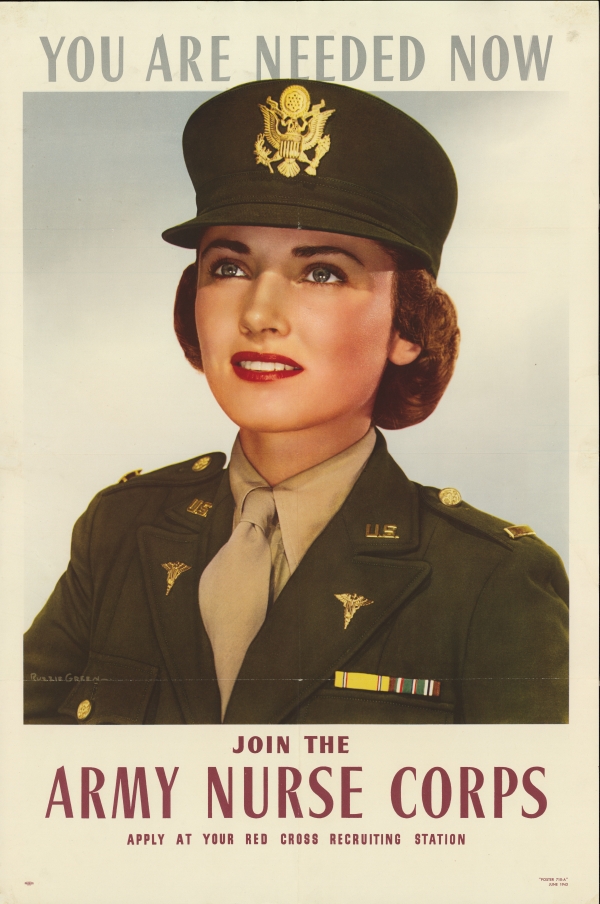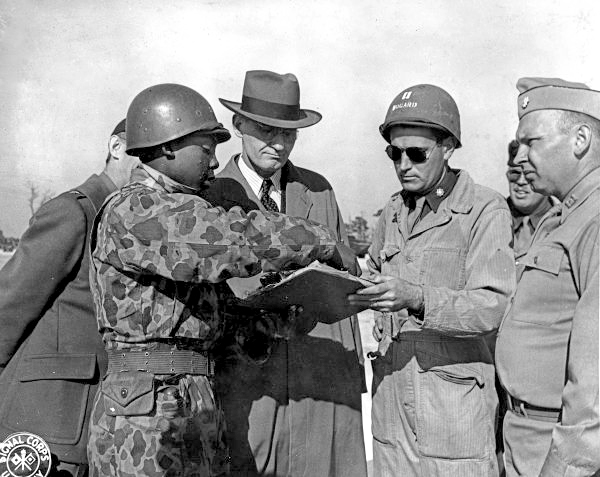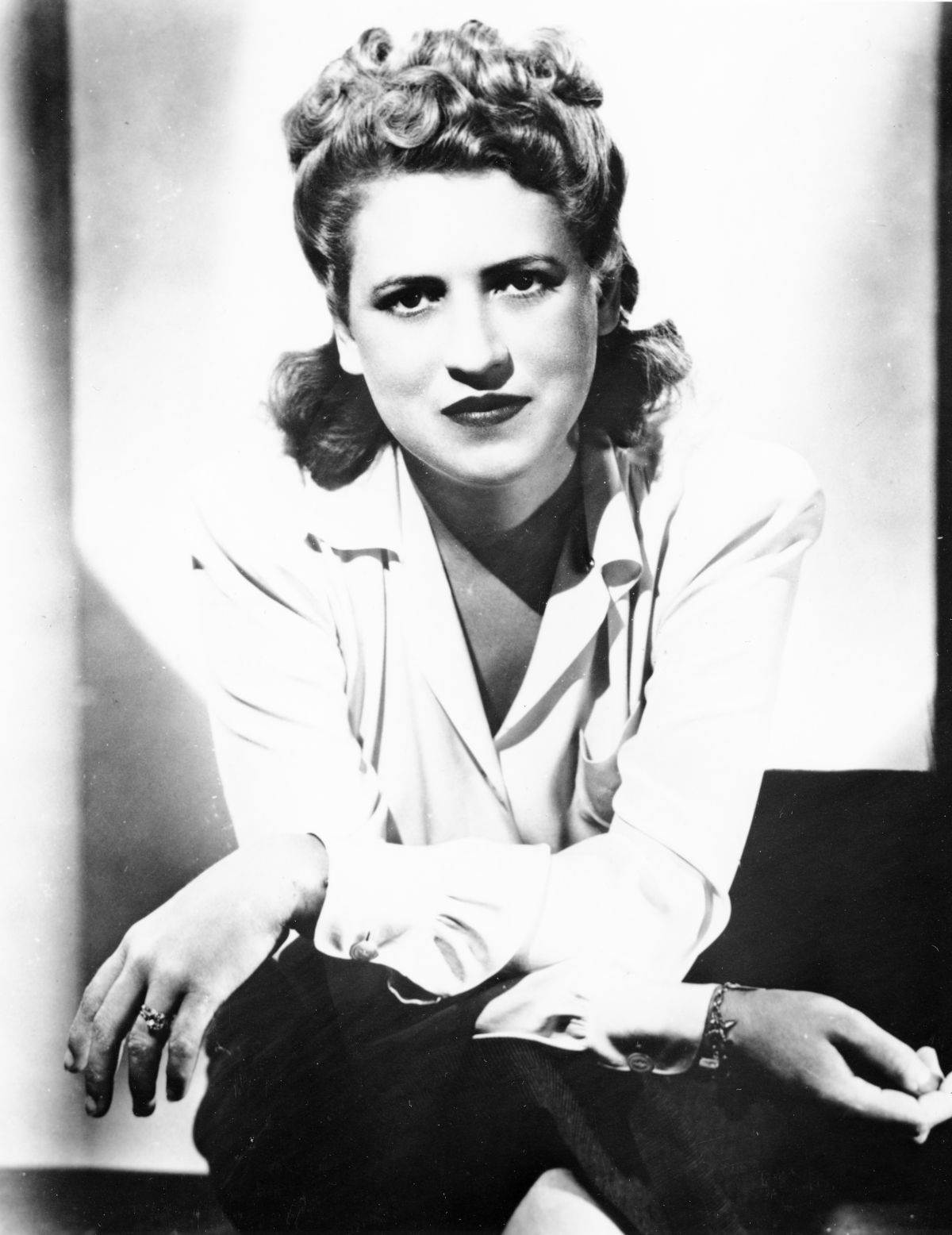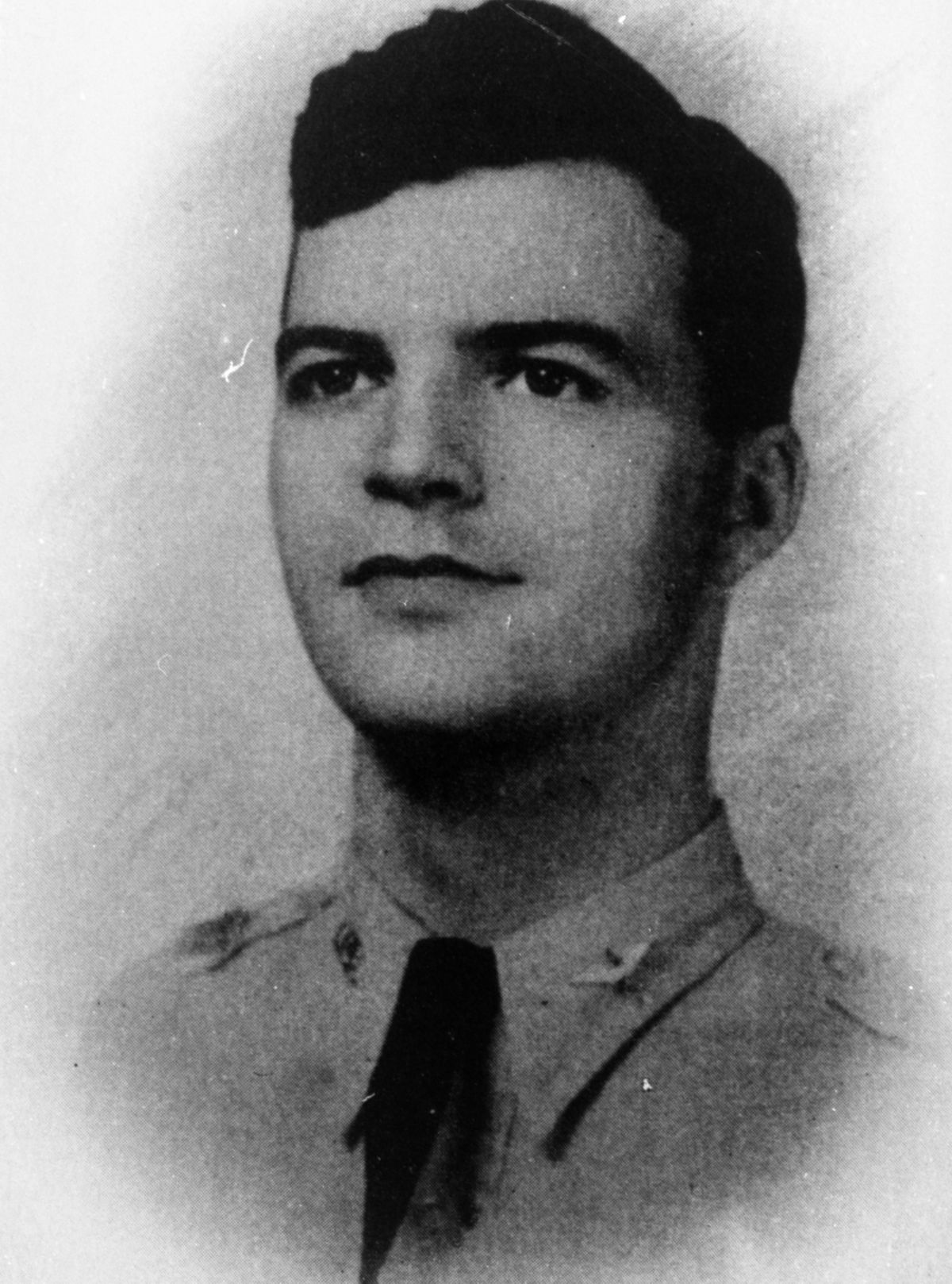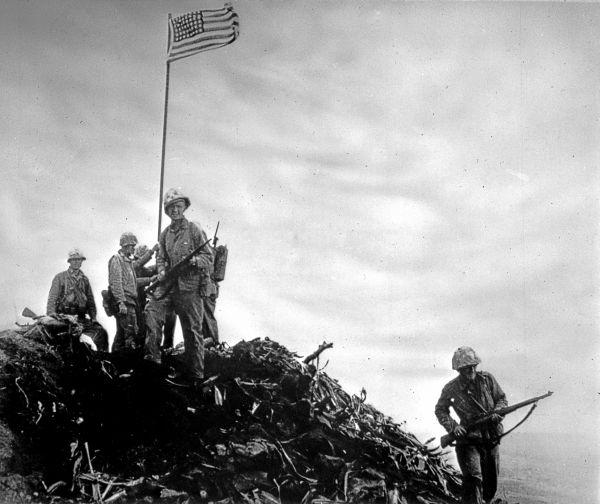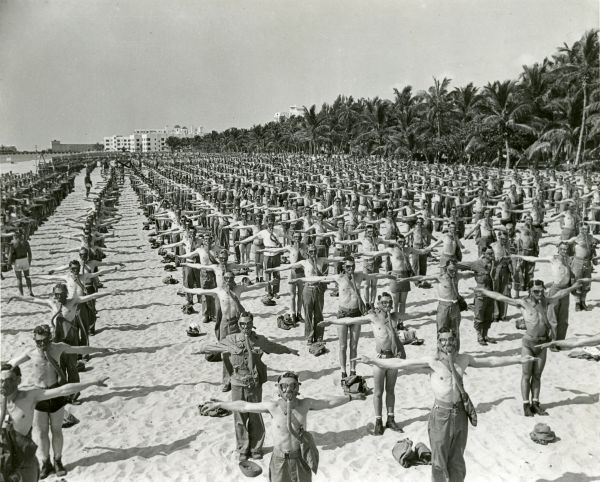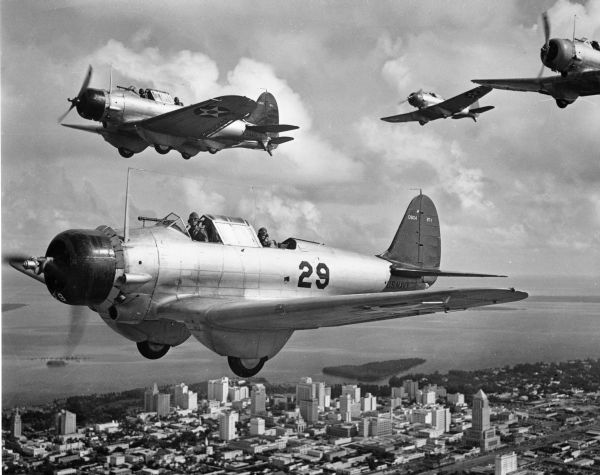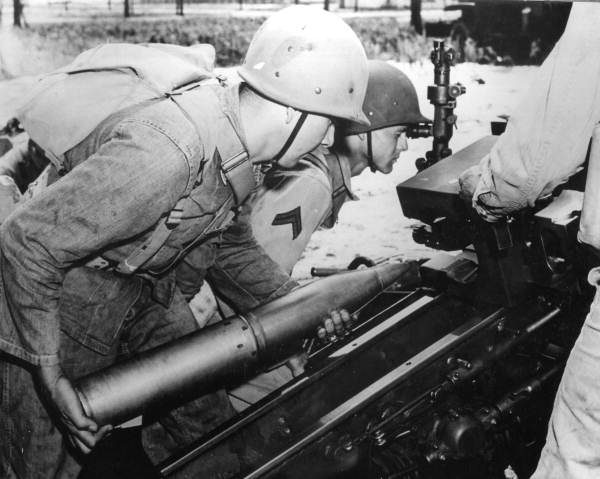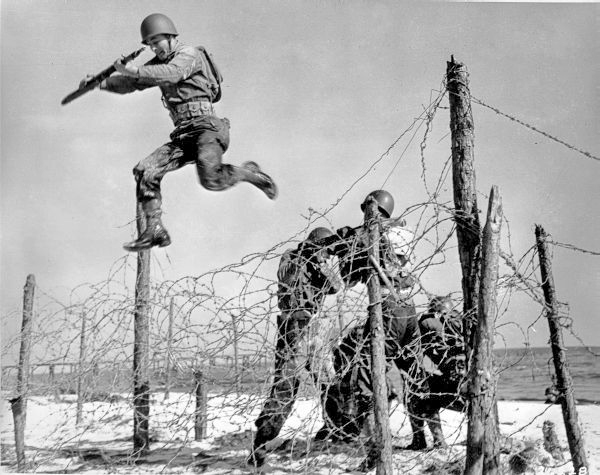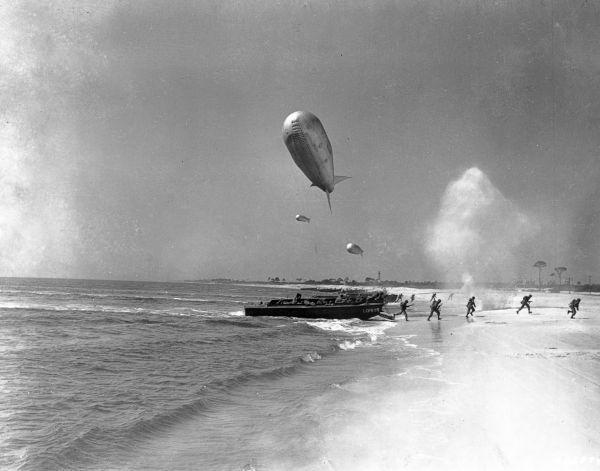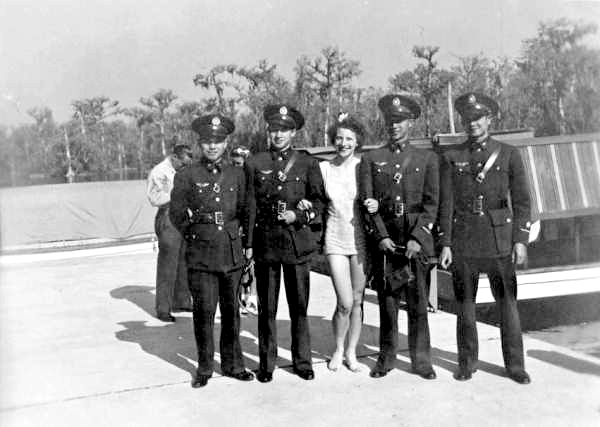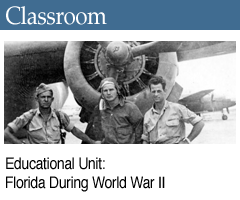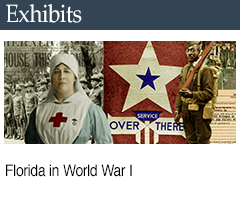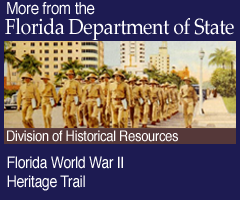Florida in World War II
Florida Joins the Fight
Floridians contributed to the war effort both at home and abroad. In 1940, when the National Guard was activated for national service, 3,941 Floridians were among its numbers. From then until 1947, another 254,358 men and women entered active service.
On May 14, 1942, Congress approved an act that allowed women to enlist for noncombat duties in the U.S. military. The act led to the creation of the Women’s Auxiliary Army Corps (WAAC), the Women Appointed for Voluntary Emergency Service (WAVES), the Women’s Auxiliary Ferrying Squadron (WAFS) and the Semper Paratus Always Ready Service (SPARS). Many Florida women were quick to sign up and serve their country. When recruiters first arrived in St. Petersburg to interview female candidates for wartime service, so many women arrived that the military representatives had to extend their stay for two additional days to process them all.
A fifth (51,467) of the Floridians who served in the military were African-Americans. Despite ongoing segregation throughout the state at this time, these individuals chose to serve their country, in part hoping that military service would help erase the inequities that separated them from their white counterparts. African-American community leaders promoted this strategy as a quest for a “double V” victory – victory over enemies abroad as well as segregation at home.
Find more on: Women in Service | African Americans in Service
Notable Floridians in Service
A number of Floridians were recognized for distinguished service during the war. Seven adopted or native Floridians received the Medal of Honor, the nation's highest award for heroism.
They were Army Air Force 2nd Lieutenant Robert E. Femoyer of Jacksonville, Army 2nd Lieutenant Alexander "Sandy" Nininger of Fort Lauderdale, Navy pilot Commander David McCampbell of West Palm Beach, Army Air Force Major Thomas B. McGuire of Sebring, Marine Private Robert M. McTureous of Altoona, Army Private James H. Mills of Fort Meade, and Army 1st Lieutenant Cecil H. Bolton of Crawfordville. Of these seven men, only Bolton, McCampbell and Mills survived the war.
Jacqueline Cochran, an internationally known aviator born in Panama City and raised in Pensacola, was tapped to direct the Women Airforce Service Pilots (WASP) program in 1943. WASPs were restricted to non-combat missions, but they were essential to satisfying the war’s unprecedented demand for trained pilots. In 1945, Cochran received the United States Distinguished Service Medal.
Captain Colin P. Kelly Jr., a native of Madison, was posthumously awarded the Distinguished Service Cross after he died during an attack against the Japanese in the Philippines just three days after the United States entered the war. Kelly and his crew were in the process of attacking a Japanese ship when their B-17 bomber was hit by enemy fire. Kelly ordered his crew to bail out of the plane, but he was unable to escape before the aircraft crashed.
A Monticello native, Sergeant Ernest I. “Boots” Thomas was a member of the Marine platoon that raised the first American flag on Iwo Jima on February 23, 1945. The iconic Iwo Jima memorial is based on the raising of a second, larger flag that took place four hours later. Thomas was killed a week later while calling in for support for his unit.
Find more on: Notable Floridans in Service
Training in the Sunshine State
In addition to providing military personnel, Florida played host to soldiers from across the United States as they began their training for service. Florida was an excellent training ground for troops because of its milder climate and variety of available terrain. Beaches and marshes provided the perfect classroom for preparing soldiers to engage in amphibious warfare. Wide, open fields, devoid of people and buildings, were helpful for training new pilots to operate and land their aircraft. By the end of the war, Florida boasted over 170 military installations, ranging from the sprawling Camp Blanding, near Jacksonville, to small bombing ranges in Sopchoppy, near Tallahassee, and in Immokalee, in the Everglades.
Practicing troop maneuvers at
Wakulla Springs (WV-4)
Miami became one of the most remarkable training centers established by the U.S. military during the war. As the demand for troops began exceeding the capacity of the nation’s existing bases, authorities looked for creative solutions to find more training space. Miami and Miami Beach were home to a rich assortment of hotels, many of which were turned over to the military during the war. Critics scoffed at the idea of soldiers bunking in the posh rooms of Miami’s grand hotels, but Under-Secretary of War Robert Patterson merely responded by saying, “The best hotel room is none too good for the American soldier.” The first recruits arrived in Miami in February 1942, and by the fall 78,000 trainees were quartered in 300 of Miami’s finest hotels.
Camp Blanding, located southwest of Jacksonville in Clay County, started out as a summer training facility for the Florida National Guard. During the war, however, it became the state’s fourth largest city, housing 55,000 military personnel. It included 125 miles of paved roads as well as a hospital with 2,051 beds. When the camp was first proposed in 1939, the cost for constructing it was estimated to be $700,000. With wartime expansions, the complex ultimately cost $60 million, as military authorities converted it into one of the largest training bases in the Southeast.
Meanwhile, a unique form of training was underway on Florida’s Gulf coast near Carrabelle. The Army and Navy had been looking for suitable sites for training personnel for amphibious invasions, and this stretch of coastline appeared to fit the bill. Once the site was selected, the federal government quickly bought up 10,000 acres and leased an additional 155,000 acres of land, forming a base with nearly twenty miles of Gulf coast frontage between St. George Island and Alligator Point, including Dog Island and the beaches near Carrabelle. The new installation was named for Gordon Johnston, an Alabama native who served in the Spanish-American War and World War I and received the Medal of Honor in 1910. Thousands of servicemen trained at Camp Gordon Johnston, many of whom were involved in the amphibious “D-Day” invasion of Normandy in 1944.
Dale Mabry Field near Tallahassee started out in 1929 as the capital city’s first municipal airport. On January 24, 1941, the field was activated as a base for the Army Air Force. Thousands of Allied troops, including Chinese and French cadets, received flight and mechanical instruction at Dale Mabry. The base was deactivated in 1945, but was later used as an auxiliary campus for the temporary Tallahassee branch of the University of Florida. This auxiliary campus served the surplus G.I. Bill students the University of Florida lacked space to accommodate in the early postwar years.
Some training sites were more clandestine. Camp Murphy, near Stuart, for example, was home to a secret radar training program established by the Army’s 801st Signal Training Regiment. The camp was constructed on a tract of about 8,000 acres located near Hobe Sound. The dense forest covering much of the land was ideal for concealing the operation. The soldiers stationed there often went into town and mingled with civilians, but when asked what they were doing at Camp Murphy, they were sworn to reply simply that they were attending “radio school.”
Find more on: Military Training in Florida

 Listen: The Latin Program
Listen: The Latin Program
